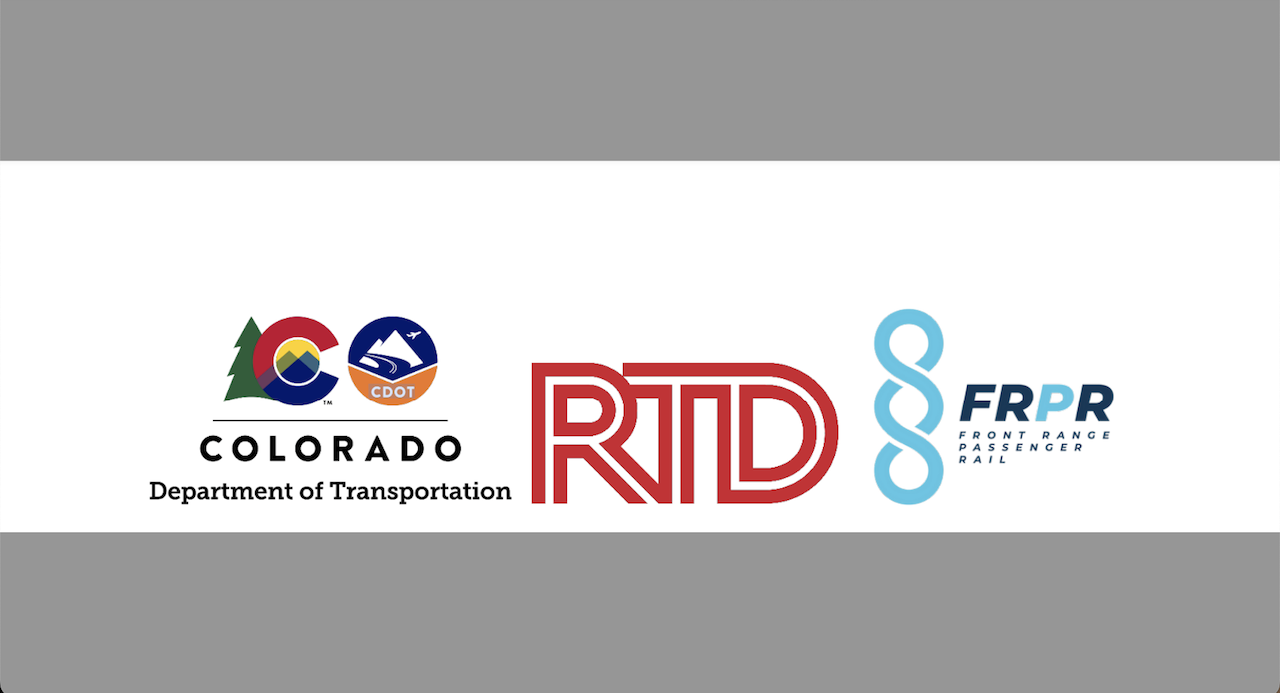
New White Paper Explores Partnership to Complete Northwest Rail
Written by Carolina Worrell, Senior Editor
The Polis Administration, the Regional Transportation District (RTD) and the Front Range Passenger Rail District (FRPRD) recently released a white paper that explores the possibility of a new partnership that would enable Colorado to complete the voter-approved Northwest Rail line between Denver, Boulder and Longmont, and to build the first phase of Front Rage Passenger Rail (FRPR) by extending service to Fort Collins. This rail service would use the existing BNSF Front Range Subdivision through Boulder, Longmont, Loveland and Fort Collins (FRPR Northwest Phase 1).
According to the Colorado Department of Transportation (CDOT), the 2004 FasTracks ballot initiative campaign proposed rail service from Union Station to Boulder and Longmont, which would have been considered “commuter rail service” under federal law and governed by the Federal Transit Administration (FTA).
Over the last 20 years since the FasTracks ballot initiative passed, the project has stalled “due to a lack of adequate funding to start the project,” according to CDOT. In the meantime, the legislature created FRPRD in 2021 “shifting state priorities to both completion of Northwest Rail and to build an intercity connected passenger rail network from Fort Collins to Trinidad.” By extending beyond Longmont to Fort Collins the train service would be considered “intercity passenger rail,” unlocking expanded federal funding.
This white paper (download below) seeks to kick start a conversation of the benefits a partnership between RTD, CDOT and FRPRD can bring “to maximize operational efficiencies and accelerate delivery of two parallel train services contemplated to run on the same existing train tracks.” A partnership and joint powers agreement could “enable the stacking of financing options, combine and streamline planning with the goal of accelerating a starter service on this segment—something none of these entities could currently do on their own,” according to CDOT.
“Unfinished NW Rail has vexed many leaders for decades,” said Lisa Kaufman, Senior Strategic Advisor to Gov. Jared Polis. “For 20 years voters have been paying for rail service that they have not received and will continue to not receive if we hold on to the past, don’t seize the opportunities we have today and look to our future needs. I am hopeful this white paper represents a new era of collaboration and creative problem solving to address the unfulfilled commitment to the voters and deliver an important transit solution to our fast-growing northern communities. With the once in a generation federal investment in intercity passenger rail, now is the time for bold leadership.”
“Through a joint powers partnership, we can leverage the strengths, funding, and existing technical work from all of our potential partners to overcome the historic challenges for providing a starter service for Northwest Rail,” said CDOT Senior Advisor John Putnam. “And at the same time, by expanding the starter service to Fort Collins, we can achieve important passenger rail goals by completing a first phase of the project, unlocking more federal resources, and buying down the total potential cost of Front Range Passenger Rail. Teaming together, we can achieve wins for several important Colorado priorities.”
According to CDOT, the FRPRD Northwest Phase 1 would be the foundation to build from for further FRPR and local service and enhance chances for a voter-approved, ongoing funding source that could expand service and increase frequency. These near-term steps would also support the efforts already in motion for full passenger rail service from Pueblo to Fort Collins.
“It is extremely important for RTD to optimize mobility options through regional collaboration,” said RTD General Manager and CEO Debra A. Johnson. “To that end, RTD will work with its partners to leverage best practices from around the nation, explore opportunities to develop strategies that reduce congestion and greenhouse gas emissions, thereby improving residents’ quality of life. This white paper represents a first step toward the potential coordinated development, in alignment with RTD’s own Northwest Rail Peak Service Feasibility Study, of an integrated passenger rail network.”
“We have a time-limited opportunity to use the Bipartisan Infrastructure Law’s grant funds directed to intercity passenger rail. This lets Colorado deliver on the potential of Front Range Passenger Rail while work continues on funding and delivering the entire corridor from Fort Collins to Pueblo,” said FRPRD General Manager Andy Karsian.
According to CDOT, the Federal Railroad Administration (FRA) recently accepted the preferred track alignment and the FRPRD officially selected as its route to be the BNSF Front Range Subdivision from Union Station, through Boulder to Longmont—the same route called out for Northwest Rail in FasTracks. The FRPRD proposal was also selected in the first round of grant recipients for the $36 billion Corridor Identification and Development (Corridor ID) Program created in the Federal Infrastructure bill. While FRA selected 60 corridors to develop, Colorado’s FRPRD proposal is one of only two corridors selected into Step 2 of the process, making federal investments uniquely available to Colorado at this time.
The Denver-Fort Collins corridor was identified as a priority in the legislation establishing the FRPRD: “the preferred alignment for the northern segment of the main North-South passenger rail line is through the northwest rail corridor. The Front Range Passenger Rail District shall prioritize the initiation of construction and completion of that corridor.
“The district statute and Service Development Plan identify the BNSF existing rail line from Denver to Fort Collins as the preferred track alignment for Front Range Passenger Rail, which has been accepted by the FRA. This route would be considered intercity passenger rail service under federal law (as opposed to commuter rail), which has several important benefits of accessing IIJA funding and RRIF. Further, if Amtrak is selected as the operator, Amtrak has certain priority rights under the Passenger Rail Investment and Improvement Act of 2008 (PRIIA) for access to existing rail tracks for the purpose of intercity passenger rail.”



